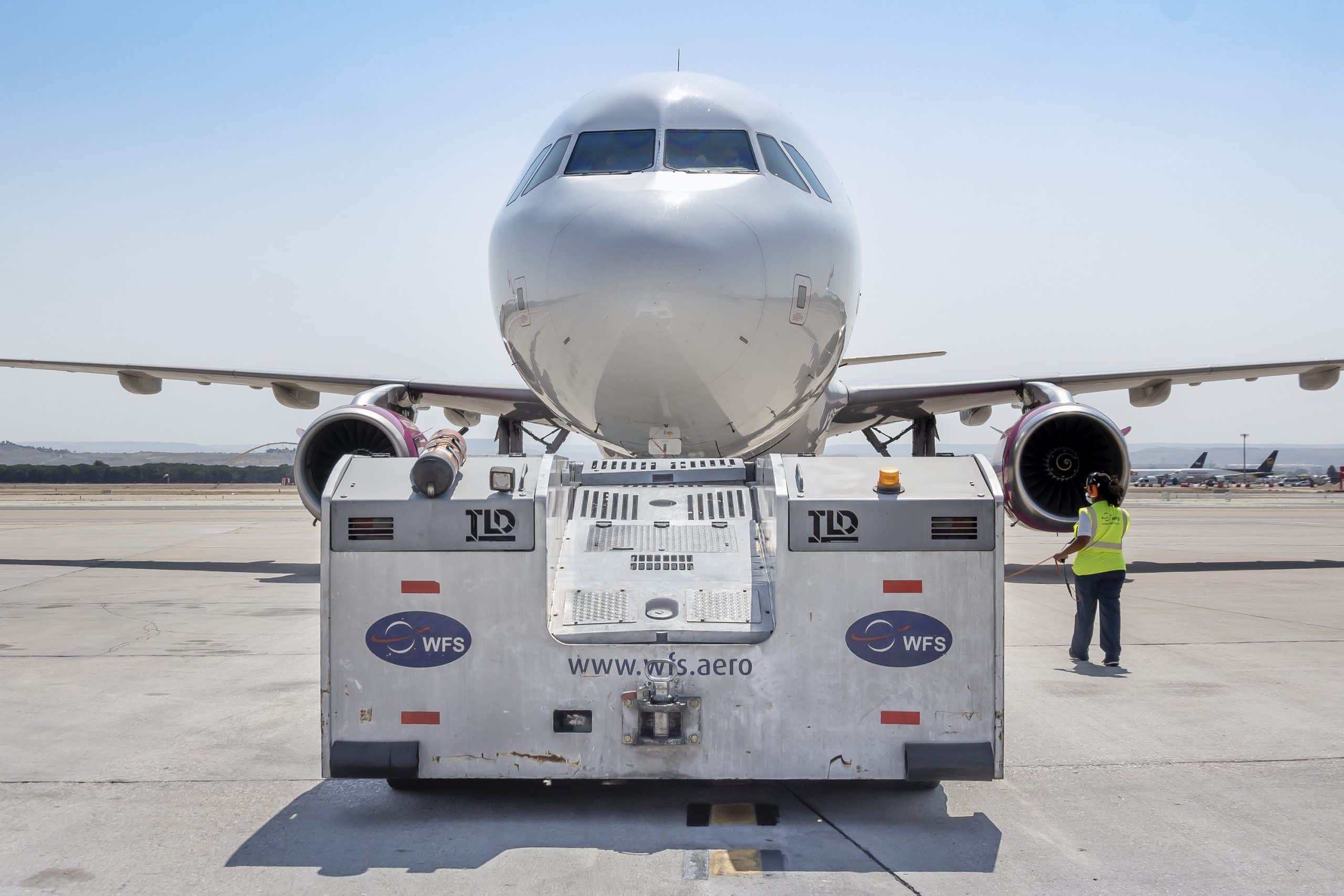Airports and Airline Services North America
11 October 2018
The market revival is welcomed but is proving challenging for cargo handling agents in North America, where capacity is often stretched to the limits and infrastructure is in adequate in many locations. But handlers are taking various measures to improve efficiency and better manage spikes in volumes, reports Ian Putzger
Air cargo handlers in North America are not complaining about a lack of business, but the recent return of the market to robust growth is bringing its own set of challenges.
“Volumes are much bigger than last year and have been boosted by a series of new contracts,” reports Ray Jetha, senior vicepresident for sales and business development at Worldwide Flight Services.
And after a surge of almost 20% last year, rival Swissport has registered growth in the neighbourhood of 2-4% in 2018, depending on the month, says Dany Nasr, CEO for USA. “We continue to grow,” he says, adding that this is driven by a combination of new business and expansion of the market.
Menzies Aviation could have boosted its business beyond the growth it clocked up this year but decided to put on the brakes. “Like most handlers we have seen an upturn in volumes from our existing customers,” states Robert Fordree, vice-president for cargo development. “We are focused on continuing to deliver the right service for our customers, and so we have resisted any temptation to overload our facilities with too many customers and too much volume.”
Capacity limitations
Capacity limitations have been a serious challenge for handlers. “On-airport capacity is tight, which is an industry challenge,” says Jetha.
Nobody expects this situation to change for the better in the near future. If anything, the pressure looks likely to increase and according to one source, Amazon is starting to lease its own facilities at airports, which is going to put further strain on capacity.
There is broad agreement that facility development is overdue after a lengthy hiatus in construction. During the downturn that followed the global financial crisis of 2008-9, airports did not invest in new cargo buildings, with a few exceptions. Aviation facility developer Lynxs used to be one of the leading builders and managers of air cargo facilities in the US, but the downturn prompted the company to focus more on MRO (maintenance, repair and overhaul) and other aviation facilities.
Peak problems
Last year’s peak season gave a taste of the problems that rampant growth has visited on cargo terminals at airports. Many warehouses were operating at maximum capacity and could not keep up with the volumes, which resulted in lengthy delays in getting freight to consignees.
At this point, Menzies is not experiencing any significant capacity problems, but it is an issue to secure suitable additional warehouse locations, remarks Fordree.
Worldwide Flight Services has been among those looking to invest in new facilities. In January, it signed a 15-year lease on a new 346,000sq ft (33,000 sqm) cargo terminal at New York JFK, which is due to open in the fourth quarter of 2020. And Swissport moved into a 130,000 sq ft (12,,000sqm) warehouse in Chicago at the end of last year.
Notwithstanding these developments, airport infrastructure is lacking, with airports needing to invest more – both in cargo facilities and in improved road access, says Nasr.
Study mode
But most airport authorities seem to be in no hurry to act. “Everything is in study mode, is what they tell us, but in terms of actual developments, we are still waiting to see actual plans and timescales,” comments Jetha. As passenger numbers are climbing, there appears to be a greater sense of urgency to build or expand passenger facilities.
Ray Brimble, CEO of Lynxs, is slightly surprised by the lack of development. “I would have thought there would be more activity, but so far I have not seen that much, certainly less than I expected,” he says. “Airports seem to be re-exploring their options, if they want to develop facilities themselves or use a third party,” he continues, adding that in recent years the latter option has been more or less the default.
Healthy prospects
The shape that the cargo industry is in Network Services, should give airports confidence in new facility development, he argues, pointing to growth over the past couple of years and the prospect of further momentum. “Now more airlines and service providers are healthy than ever before,” he adds.
The recent past would have been a good time to build new cargo infrastructure, he points out. Now building costs are climbing considerably – interest rates are on the riseand construction material is getting more expensive. Since the end of last year, the cost of steel went up 20%, he says.
Antiquated facilities
What aggravates the capacity problems beyond the lack of warehouse space is the fact that many facilities were built over 20 years ago and are not well suited to today’s requirements.
“If you squint, you can see 1980 in a lot of cargo facilities,” quips Tim Strauss, vice-president, cargo of Air Canada. “We’ve replaced the telex, but not much else.”
Brimble wonders if the meteoric rise of ecommerce may actually be causing airports to hold back on facility development. “People know that the business model is changing with e-commerce, so maybe they want to wait and see how facility requirements are evolving,” he reflects. Jetha comments: “E-commerce is a different animal. It’s fast moving, extremely time-sensitive; everything is real-time with it. It’s a great growth opportunity for handlers and our customers and we have to rise to the challenge of managing such flows, usually.within our existing operations.”
WFS is investing in a fully automated module for express shipments in its cargo management system that is meant to streamline its operations and will further support the requirements of e-commerce customers, he reveals.
“E-commerce is a bit of a shift for us,” says Swissport’s Nasr. “We try to adjust our processes and go to real-time information.”
Jens Tubbesing, CEO of GSA Airline Network Services, finds that many facilities are ill-suited for e-commerce. He criticises warehouse design, which still seems driven by paradigms of yesteryear, such as a relatively small number of truck doors for large vehicles instead of more docks for a higher number of smaller trucks. Nobody seems to be employing design engineers to devise air cargo terminals, he adds.
Automation
With little available facility space, one option for handlers is to try to increase capacity through automation. Compared to Europe, warehouses in the US have deployed less automation, so there are huge opportunities,says Nasr. Swissport is looking at a number of options, such as driverless forklifts and robots to help with pallet building.
Another angle is blockchain. In a partnership with Olam, a Swiss not-for-profit organisation, Swissport intends to set up a ‘proof of concept’ in a facility that will use the technology to track shipments within the building as well as at a forwarder’s facility and between the two. It will cover shipment status and financial information as well as readings of ambient conditions like temperature and humidity.
Menzies is also evaluating the benefits of more sophisticated automated handling solutions alongside greater labour and warehouse floor capacity for e-commerce, says Fordree. “We are engaged with both software and hardware providers to help us assess these solutions,” he adds.
Short-term solutions
At the same time, the company is considering short-term solutions that are largely based around a bigger footprint of warehouse space and increased labour to hanle types of cargo that require special handling, such as pharmaceuticals, perishables or high-value shipments.
Air Canada is looking to almost double its capacity through the overhaul of its Toronto hub, which is nearing the end of the design phase. According to Strauss, the expansion is going to be driven in equal parts by the handling system, the facility itself, and the use of technology.
Based on how long it takes to get everything done in time for loading an aircraft, the system makes decisions on what cargo to allocate to a flight. It also takes external factors into account, such as rain in perishables growing regions, which signals that more capacity should be allocated to other commodities on the day.
“I’m a firm believer that we win the game on the ground,” says Strauss. “We don’t want a storage facility, we want a pass-through facility.”
But in some older buildings it does not make sense to deploy technology because the infrastructure does not support it, remarks Jetha. “If we see airport authorities investing in new cargo warehouses, it will encourage the operators of those facilities to invest in new technologies as part of their own long-term commitment,” he adds.
Landside Challenges
The challenges that handlers face are not confined to the warehouse but extended to the landside and airport access roads. In Europe, several gateways have started to manage truck flows to their facilities. Nasr sees opportunities there, but the issue has not yet come up in talks with airports in the US, he says.
Worldwide Flight Services does have a truck management system in place that registers who comes to the facility and when and identifies patterns. On the basis of this, the handler can allocate docks and certain time windows to individual customers.
Meanwhile, another issue inside the warehouse is manpower. With unemployment averaging around 4% in the US, finding and retaining staff is challenging for handlers. Most job seekers look to start a new employment immediately, so the time it takes to complete the background check is an additional hurdle for handlers.
This makes employee retention even more important. Remuneration is a key aspect, but not everything. says Jetha. Training and development opportunities are part of the effort of Worldwide Flight Services to keep staff.
Swissport also tries to offer employees a career path. “It’s not only pay,” says Nasr.
Salaries are up, in part because of minimum-wage mandates. While this is not helping handlers with their margins, it has raised public awareness. Airlines know about minimum-wage legislation and take this into account in their negotiations, handlers report.
Cost-service balance
Jetha says carriers increasingly understand that achieving the service levels they need means looking beyond simply the lowest. cost. “One of the reasons why we’ve been successful in growing our US business in the last 2-3 years is because customers can see we offer the cost-service balance they need for a sustainable cargo operation,” he remarks.
Nasr agrees that airlines have become more open to discuss better service and investment.
This suggests that carriers are no longer viewing their handlers purely in terms of cost reduction. Stan Wraight, president and CEO of Strategic Aviation Solutions International, thinks this is an overdue and necessary step. And the rise of e-commerce and the increased demand for express solutions gives carriers an opportunity to take a larger share of the premium market from the integrated express carriers, as – at least in theory – they can offer faster connections. However, they need higher performance levels from their handlers; and this requires adequate remuneration – and not treating a handler as a means to achieve cost savings, he argues.
Strauss comments that it ultimately hinges on an airline’s approach to the freight business, noting: “Is cargo a revenue play or a cost-control play? This determines how you look at the business,” he says.
For their part, the major handlers appear to be willing to up their game.
“We’ve made a big push to improve our service delivery to customers,” says Nasr. “We want to add value. We can bring consistency across different warehouses to our customers,” he continues, adding that Swissport is using CargoSpot across its network.”
And following a review of its global handling business, Menzies has formulated a new cargo strategy for the future, which is focused primarily on standardising its existing service offering.
“In recent months, we have been focused on the roll-out of this plan. Some of its key elements are a new training programme, improved internal standards, alignment of our manuals and work procedures – both internally and with IATA – and the full implementation of our operating system at all locations,” says Fordree. “We expect to conclude the initial phase of our strategy implementation by the end of the year and have joined Cargo iQ.”
Such steps should also help avoid a repeat of the struggles of the 2017 peak season, along with certain specific extra steps that some handlers have taken to address the challenges of spikes in trafficm particularly during peak periods. Swissport has reassessed flows in some warehouses and brought over engineers from Zurich to design more optimal cargo flow, for example. However, the most important aspect they stress is close communication with their customers to forecast volumes.


